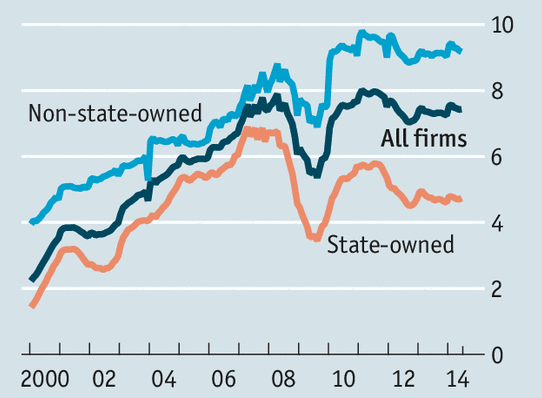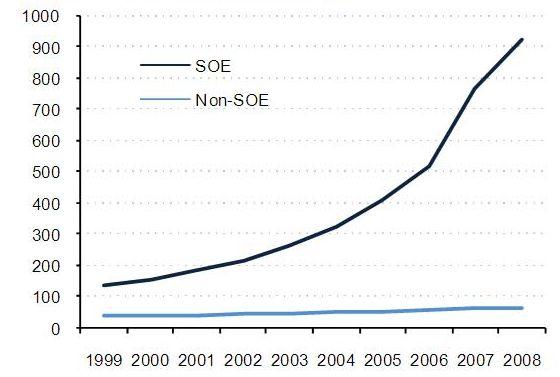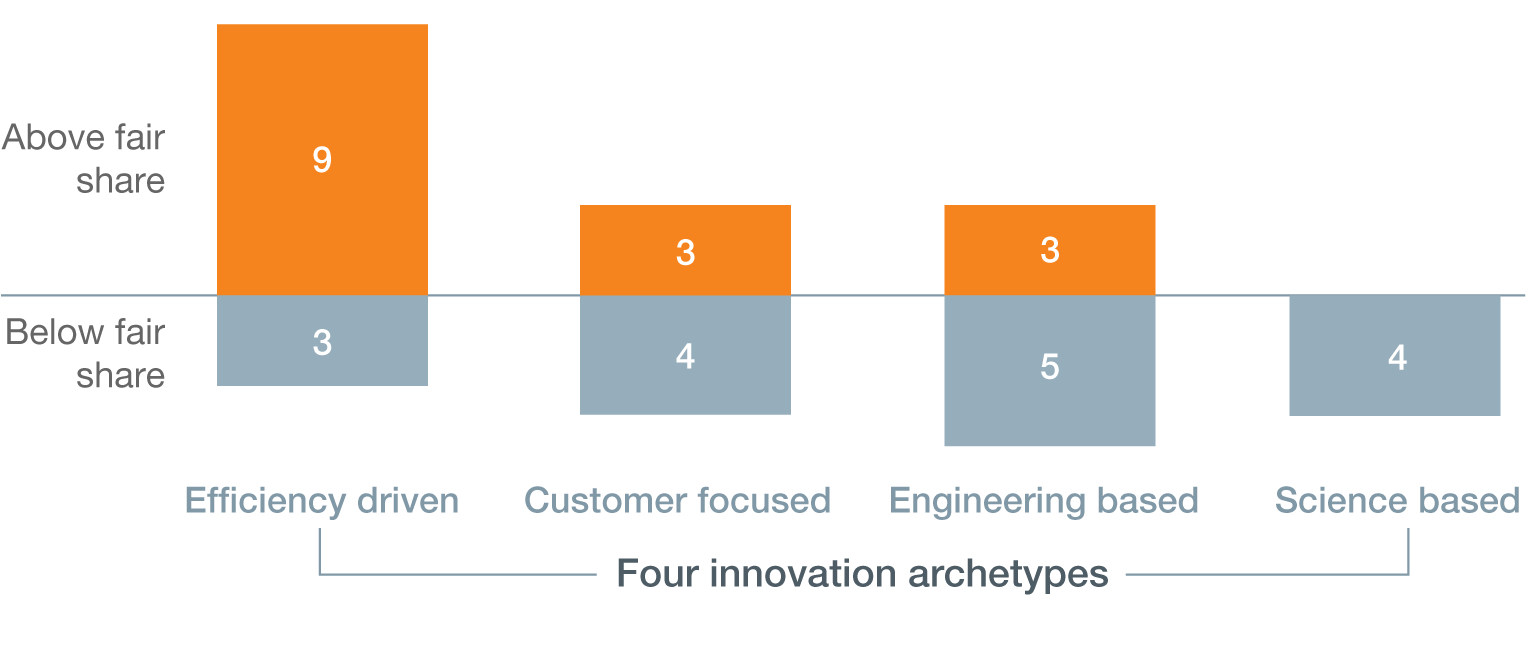In the recent years, China has demonstrated significant economic growth. This achievement is especially impressive considering the country’s current managerial landscape, characterized by a prevalence of state-owned enterprises, strict control by the government, and a number of cultural and social factors that preclude the emergence of management systems compatible with international standards (Xu, 2010). The following section contains a series of recommendations intended to facilitate the creation of new management approaches.

Despite the impressive financial performance, China has not delivered managerial solutions applicable on an international scale. However, the privately owned enterprises have already demonstrated the capacity for generating profitability (see Figures 1 and 2 for details).

It is also worth pointing out that despite the lack of a systematic framework, Chinese companies have managed to develop a series of innovation-driven solutions that can be used to enhance existing and create new management styles (see Figure 3 for details).

One example of such solutions is the approach to workplace ecosystem management. Chinese managers tend to ensure the availability of necessary resources by creating the sources of supply directly (Hout & Michael, 2014). For instance, the competencies and skills of employees are often provided internally, through company-issued training. In some cases, they go as far as reaching out to schools to ensure the consistency of education with the expectations of the employers. In the same manner, the suppliers of components and raw materials can be established to respond to specific needs and adjusted to provide the necessary level of quality (Roth, Seong, & Woetzel, 2015). Understandably, such an approach offers an advantage in terms of scalability, which is especially important considering the gradually increasing scope of practices.
Another example is the degree of decentralization of management. In order to respond to differences of the legal landscape in different provinces and changes in the market, privately-owned enterprises delegate decisions to individual business units. As a result, some of the business entities resemble partnerships between independent business organizations, with separate sets of responsibilities and sources of competitive advantage (“Fixing China Inc,” 2014). While this approach may not be relevant for most national companies, it offers sufficient flexibility and autonomy to international entities. The viability of the approach can be confirmed by the performance of the companies operating under this approach.
To sum up, the current state of managerial practices in China indicates the existence of viable directions of development applicable both domestically and internationally. It is recommended to systematize the use of these practices and incorporate them in management systems and theory-backed approaches.
It is also important to account for the rapidly changing work culture in China. Chinese work culture is known to be inherently hierarchical as a result of strict adherence to the Confucian tradition (Warburton, n.d.). Such an emphasis may mislead and repel the international companies that commonly utilize contemporary Western business values (Zhang, van Doorn, & Leeflang, 2014). In reality, Chinese work culture in the privately owned enterprises can be described more accurately as a blend of leadership styles based on tradition with the administrative practices leaning towards decentralization.
It should be specified that the former is manifested primarily in human resource practices, namely the attention to feelings and emotions of individual employees, to the point where employee retention plays a role equal in importance to the objectives of the project (Gao, Arnulf, & Henning, 2011). When formulated in this way, it becomes clear that both approaches are consistent with international standards of management principles (Bratton & Gold, 2017). Thus, it can be recommended that Chinese managers seek ways of marketing the increasing suitability of their work culture to the foreign investors and possible partners to ensure appropriate understanding of the matter.
The third recommendation is related to the specifics of teamwork in Chinese companies. While the importance of teams is already recognized by managers throughout the world, its implementation in China arguably constitutes an additional level of scale. In addition to promoting teamwork within a given workplace, Chinese businesses also team up with external ventures. One example of this approach is co-marketing, or the practice of referring the customers to non-competitors within a given market for mutual benefit (Khlystov, n.d.). In addition, collaborating with regulatory agencies and authorities is necessary for ensuring the compliance with regulations while at the same time retaining a competitive advantage. It is thus recommended to compile this information into meaningful guidelines that can be used by international partners to avoid the misapplication of managerial competencies and achieve the desired level of performance of their businesses in China.
Finally, some of the career environments in Chinese business sector present valuable opportunities for those familiar with the approaches utilized by Chinese managers. For instance, the practice of offering suppliers profitable contracts by large Chinese corporations as a way of establishing reliable supply chains in the long term can be used by potential partners as an alternative to incentives issued by government structures. In combination with an increased understanding of the local regulatory and marketing frameworks, these enterprises can serve as a viable way of elevating career opportunities and, in some instances, as a relevant educational environment for domestic and international partners.
As can be seen, management in China is a rapidly developing field. When approached with sufficient understanding of its specificities, it offers considerable growth opportunities on local and international levels. The recommendations above are expected to facilitate growth and acceptance of the Chinese managerial practices on the global scale.
References
Bratton, J., & Gold, J. (2017). Human resource management: Theory and practice (6th ed.). London, England: Palgrave.
Fixing China Inc. (2014). The Economist.
Gao, J., Arnulf, J. K., & Henning, K. (2011). Western leadership development and Chinese managers: Exploring the need for contextualization. Scandinavian Journal of Management, 27(1), 55-65.
Hout, T., & Michael, D. (2014). A Chinese approach to management. Harvard Business Review.
Khlystov, Y. (n.d.). The Importance of teamwork in China. Web.
Roth, E., Seong, J., & Woetzel, J. (2015). Gauging the strength of Chinese innovation.
Warburton, K. (n.d.). Business culture in China. Web.
Xu, G. (2010). State-owned enterprises in China: How big are they?
Zhang, S. S., van Doorn, J., & Leeflang, P. S. (2014). Does the importance of value, brand and relationship equity for customer loyalty differ between Eastern and Western cultures? International Business Review, 23(1), 284-292.